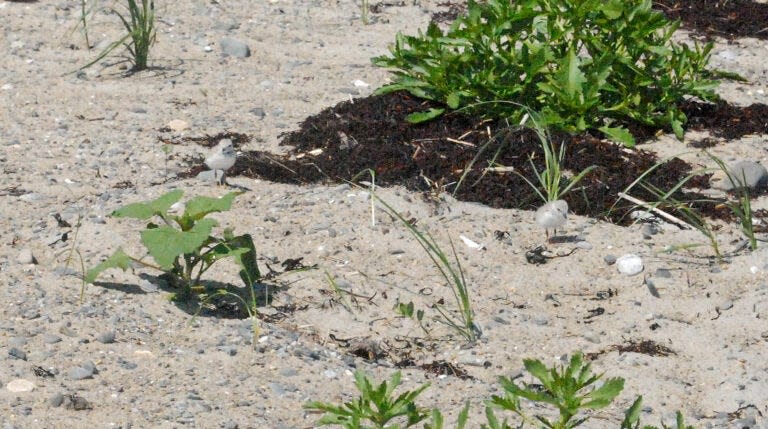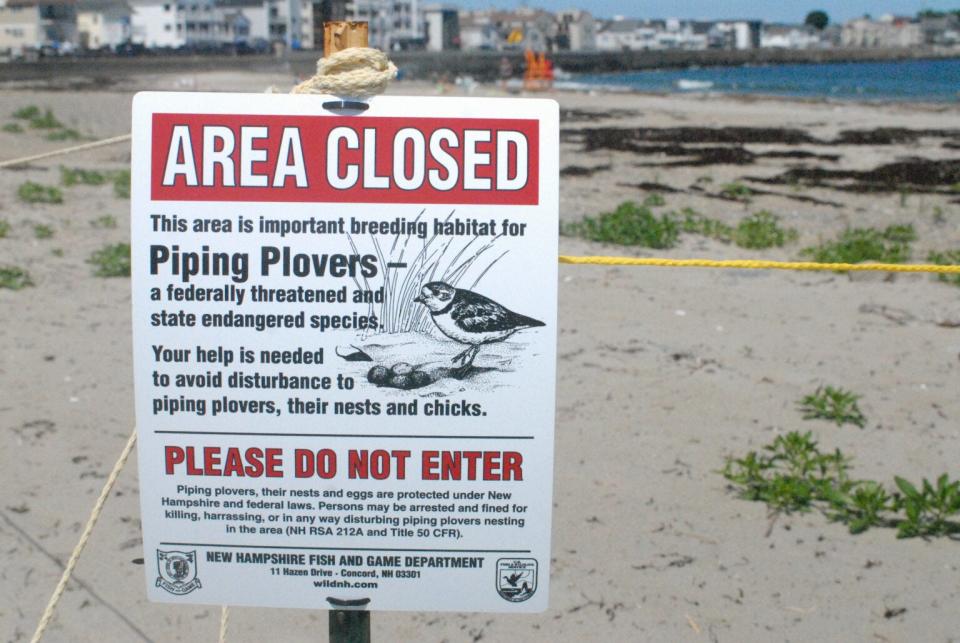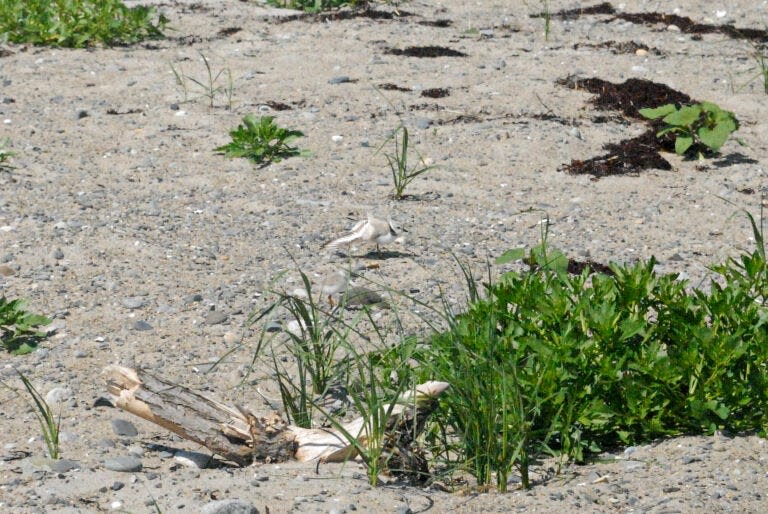Piping plover nesting pairs hit record numbers at Hampton, Seabrook beaches. Here's why.
Zipping across the sand and scurrying among sun-baked seaweed are some of the littlest and rarest seasonal visitors to New Hampshire’s beaches. In total, there are just over 2,000 pairs of them in the entire Atlantic population.
Beachgoers in Hampton and Seabrook this summer will see yellow rope sectioning off breeding habitats of piping plovers, migratory shorebirds that are designated as state-endangered and federally-threatened. Signs on the beaches warn that killing, harassing, or disturbing one can end in an arrest or a fine of up to $25,000.

State officials are reporting a record number of the sand-colored and sparrow-sized birds this year — at least 15 nesting pairs.
The plovers’ presence has led to the cancellation or postponement of fireworks displays at Hampton Beach several times over the last few years. This year’s Memorial Day fireworks went on as planned, but just last weekend, a display for the Hampton Beach Sand Sculpting Classic was canceled — a combination of rainy weather and concerns about the plovers.
Hampton Beach Casino complex: Sal Lupoli's vision for massive $400M-plus redevelopment
New Hampshire has seen a steady increase in nesting pairs over the last 10 years, a positive indication for the rare shorebird that in 1986 was listed as threatened under the Endangered Species Act. Over the last 30 or so years, piping plovers have more than doubled along the Atlantic coast, thanks to decades of conservation efforts by a variety of partners.

According to biologists at the New Hampshire Fish and Game Department, 14 pairs of plovers successfully nested in the state last year, with 28 chicks eventually making it to flight.
So far this nesting season, five nests have hatched on Hampton Beach and one on Seabrook Beach, totaling 21 chicks, according to Fish and Game.
“The chicks have really thrived so far this year,” said Brendan Clifford, a biologist with the department’s nongame and endangered wildlife program who oversees the piping plover protection effort. “With the cool and wet weather that we’ve seen this spring, the chicks have had a great opportunity to forage all along the beach without having to navigate large crowds of beachgoers.”

Clifford said the more uninhibited access the chicks have to feed along the water’s edge, the quicker they grow. That increases their chances of survival.
Their breeding habitats on the beach are demarcated by yellow rope to protect the nests from human disturbance. Fish and Game said the areas serve as refuges for the birds, where adults and chicks can ultimately retreat back after feeding near the water.
Fish and Game biologists and trained volunteers monitor the chicks daily. On busy beach days, they alert the public of their presence and provide educational outreach.

For more information about New Hampshire’s piping plovers, visit wildlife.state.nh.us/nongame/project-plover.html.
This story was originally published by New Hampshire Bulletin.
This article originally appeared on Portsmouth Herald: Piping plovers set records at Hampton, Seabrook NH beaches

